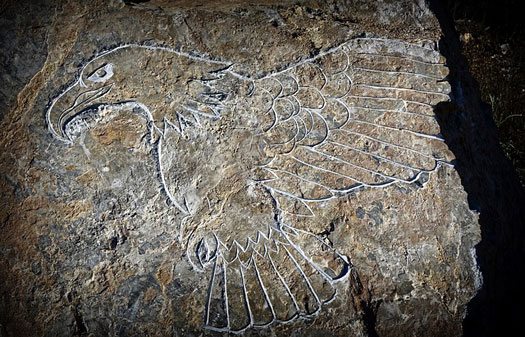
July 24, 2017; Indianz
Every year, members of the First Nations in Canada line up to receive compensation from the Canadian government for lands that were appropriated a century or two ago. Many treaties with indigenous tribes have been broken, but this obligation they have kept: Each year, every qualifying First Nations member gets $5.
Yes, $5. The Canadian government’s website states:
Treaty annuity payments are paid annually on a national basis to registered Indians who are entitled to treaty annuities through membership to bands that have signed historic treaties with the Crown…Depending on the terms of the specific treaty, these obligations can include the payment of individual treaty annuities, the provision of ammunition and twine for nets, and the provision of a suit of clothing every three years for Chiefs and Councillors.
Many First Nations people don’t even bother collecting the money. According to Indigenous and Northern Affairs Canada, 579,000 people were eligible in 2016, meaning about $2.9 million in eligible distributions, but only $1.9 million was collected; $16 million total remains unclaimed. Marcel Guiboche told the New York Times, “After everything Canada has taken from native people, we should be getting 5,000 dollars instead of five.”
Actually, Guiboche might be right, even excluding compensation for the injustices against indigenous communities that have taken place since the treaties were signed. In addition to the annuity, the treaties signed in the 19th century required the Crown to provide things like “a medicine chest,” “twine for nets,” or “necessary and sufficient” aid in times of “pestilence and famine.” Those things have been updated to mean things like medical care, social services, and economic development incentives. According to Jean Allard, a Manitoba Métis who is a lawyer, activist, and politician, “The only treaty entitlement that has not been modernized is individual treaty money. It was five dollars in 1871. It remains five dollars.”
A generic inflation calculator based on average annual inflation rates from the U.S. Bureau of Labor Statistics’ Consumer Price Index estimates that $5 in 1875, the year of the last annuity treaty, would be worth about $107 U.S. Allard, calculating by the sale value of land in in the Red River Valley, concluded that the treaty money should be valued at $5,000 (Canadian dollars) per person.
Allard says,
Sign up for our free newsletters
Subscribe to NPQ's newsletters to have our top stories delivered directly to your inbox.
By signing up, you agree to our privacy policy and terms of use, and to receive messages from NPQ and our partners.
Just as five dollars would not support someone in [1871 Indian Commissioner Weymuss Simpson’s] time, $5,000 would not be sufficient to support someone living in a city today, but for a family unit, it would provide a quite workable income base. It would mean a family of five would have an annual treaty entitlement of $25,000. It is not a lavish amount, but it is certainly sufficient to free a family from servitude to chiefs and councils and to escape welfare dependency.
If treaty money had been modernized, Indians would hold a different position in Canada’s economy than most do now. They would be seen as consumers—customers to be courted. This is exactly how Indians receiving treaty money were viewed 130 years ago.
Native Americans do not have a consumer-customer relationship with their governments today; thanks to centuries of prejudiced policy and harsh treatment, they are dependent upon the state and largely indigent. Gerald McIvor, a native rights activist, said, “The web of dependency is so perpetuated that a lot of people on reserve actually think welfare is a treaty right.”
The relationship between indigenous Americans, modern governments, and the land they share is a tricky one in Canada and the U.S. Both federal governments hold the reservation land “in trust” for native peoples, and many important sites belong to non-Native citizens. (NPQ remembers Johnny Depp’s attempt to buy Wounded Knee from James Czywczynski in 2013.) Naomi Schaefer Riley of the Atlantic explained,
The goal of this policy was originally to keep Indians contained to certain lands. Now, it has shifted to preserving these lands for indigenous peoples. But the effect is the same. Indians can’t own land, so they can’t build equity. This prevents American Indians from reaping numerous benefits…Indians have long suffered from what the Nobel Prize–winning economist Hernando de Soto has called “dead capital.” They may possess a certain amount of land on paper, but they can’t put it to use by selling it, buying more to take advantage of economies of scale, or borrowing against it.
Not only do the treaties prevent native people from using their land to build equity or benefit from the resources the land contains, but they exerted an unusual measure of control over people on reservations. Laws gave federal governments power over schools, religion, language, finances, child raising, and other basic cultural practices, to the point where many indigenous cultures and languages are said to be endangered today and native populations are said to be suffering from historical trauma. Higher rates of alcoholism, unemployment, abuse, rape, and suicide among native tribes have been blamed on the systemic repression and abuse they have suffered.
It’s hard to think of $5 as fair compensation for all but a tiny portion of Canada. Even $2.9 million doesn’t really seem right. Updating the compensation to even half of what Allard proposes would mean a $1.5 billion bill to the Canadian government every year, which is already more than what they spend on social infrastructure investments in First Nations. At the very least, the issue deserves investigation.—Erin Rubin












